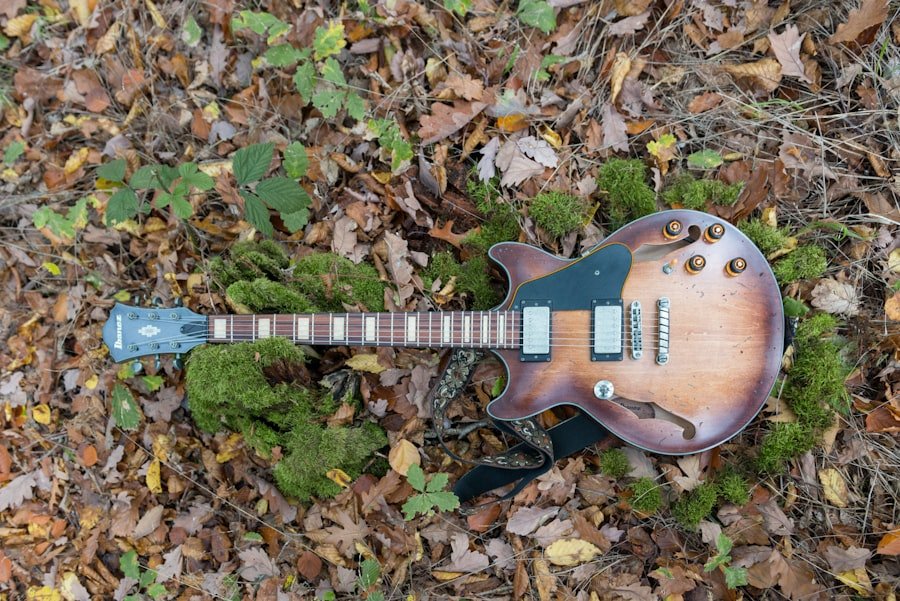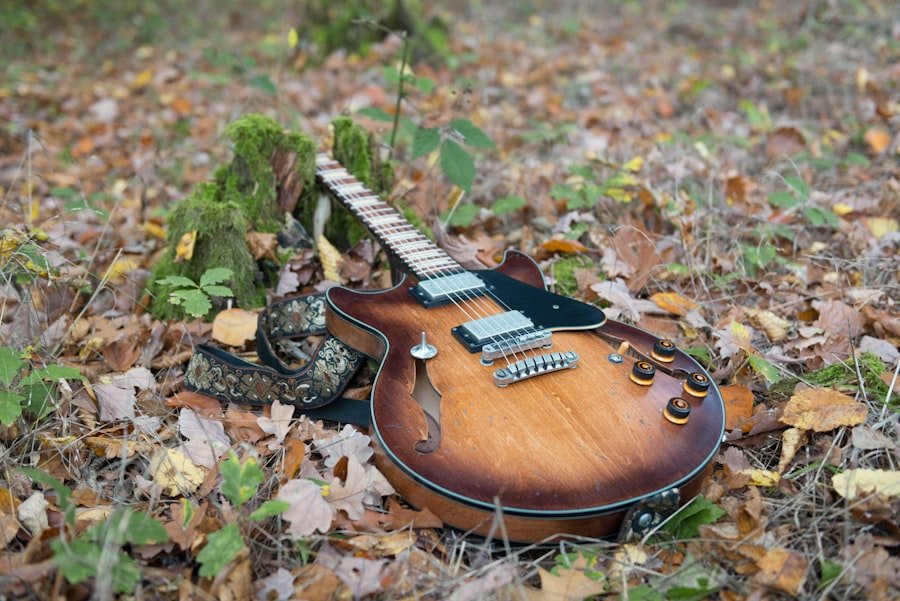This post may contain affiliate links. When you purchase through links on our site, we may earn an affiliate commission.
Patina finishes are a fascinating aspect of design that evoke a sense of history and character. When I think of patina, I envision the beautiful, often iridescent layer that forms on metals, wood, and other materials over time. This finish is not merely a surface alteration; it represents the passage of time, the elements, and the stories that objects carry with them.
Patina can manifest in various forms, from the verdigris green of oxidized copper to the warm browns and grays of aged wood. Each patina finish tells a unique story, reflecting the environment and conditions that have influenced its development. The allure of patina finishes lies in their ability to transform ordinary objects into extraordinary pieces of art.
I find that these finishes can add depth and richness to any surface, creating a visual narrative that captivates the eye. Whether it’s a weathered door, a vintage piece of furniture, or a decorative metal sculpture, the patina finish enhances the aesthetic appeal by introducing texture and color variations. This organic process of aging is celebrated in design, as it allows us to appreciate the beauty of imperfection and the charm of the past.
Key Takeaways
- Patina finishes are a type of surface coating that develops over time, giving an object a weathered, aged appearance.
- The history of patina finishes dates back to ancient times, where they were used to protect and decorate various objects, from sculptures to architectural elements.
- Embracing the beauty of patina finishes in home decor adds a sense of history and character to a space, creating a unique and timeless aesthetic.
- Achieving patina finishes on different surfaces involves various techniques such as chemical treatments, oxidation, and distressing to mimic the natural aging process.
- Incorporating patina finishes into modern design adds depth and texture, creating a juxtaposition between old and new elements in interior and exterior spaces.
The History of Patina Finishes
The history of patina finishes is as rich and varied as the finishes themselves. I often reflect on how ancient civilizations utilized patina in their art and architecture. For instance, the Greeks and Romans were known to embrace the natural aging process of bronze sculptures, allowing them to develop a patina that added depth and character.
This practice was not merely aesthetic; it was also a testament to the craftsmanship and skill of artisans who understood the transformative power of time on their creations. As I delve deeper into history, I discover that patina finishes have been celebrated across cultures and eras. In Asia, for example, traditional lacquerware often develops a beautiful patina over time, enhancing its beauty and value.
The Japanese have a term called “wabi-sabi,” which embodies the appreciation of imperfection and transience—concepts that resonate deeply with the idea of patina. This historical context enriches my understanding of patina finishes, reminding me that they are not just modern trends but rather timeless expressions of artistry and culture.
Embracing the Beauty of Patina Finishes in Home Decor

In my own home decor journey, I have come to embrace the beauty of patina finishes as a way to infuse character into my living spaces. I find that incorporating items with patina can create a warm and inviting atmosphere, making my home feel lived-in and loved. Whether it’s an antique mirror with a weathered frame or a rustic coffee table with a rich patina, these pieces serve as conversation starters and focal points in my decor.
One of the aspects I appreciate most about patina finishes is their versatility. They can seamlessly blend with various design styles, from rustic farmhouse to modern minimalism. I often experiment with different combinations, pairing patinated metal accents with sleek furniture or juxtaposing aged wood with contemporary textiles.
This interplay between old and new creates a dynamic visual experience that keeps my home feeling fresh while honoring the beauty of history.
How to Achieve Patina Finishes on Different Surfaces
| Surface Type | Materials Needed | Process |
|---|---|---|
| Metal | Vinegar, Salt, Peroxide | Apply vinegar and salt mixture, then peroxide, and let it sit |
| Wood | Steel Wool, Vinegar, Tea | Apply steel wool and vinegar mixture, then tea, and let it dry |
| Copper | Ammonia, Salt, Vinegar | Apply ammonia and salt mixture, then vinegar, and let it sit |
Achieving patina finishes on different surfaces is an exciting endeavor that allows me to explore my creativity. I’ve learned that there are various methods to create these finishes, depending on the material I’m working with. For metals like copper or brass, I often use chemical solutions or natural elements like vinegar and salt to accelerate the oxidation process.
Watching the transformation unfold is incredibly satisfying, as I see the vibrant colors emerge over time. When it comes to wood surfaces, I’ve discovered that techniques such as staining or using specific oils can help achieve a beautiful patina effect. I enjoy experimenting with different stains to enhance the natural grain of the wood while allowing it to develop a rich, aged appearance.
Additionally, distressing techniques—like sanding or using heat—can create an authentic look that mimics years of wear and tear. Each method offers its own unique results, allowing me to tailor the finish to suit my vision.
Incorporating Patina Finishes into Modern Design
Incorporating patina finishes into modern design is an exciting challenge that I relish. As contemporary aesthetics often lean towards clean lines and minimalism, introducing patinated elements can create a striking contrast that adds depth and interest. I find that even small touches—like a patinated light fixture or an accent piece—can elevate an entire room’s design.
One approach I enjoy is mixing patinated items with sleek modern furnishings. For instance, pairing a vintage patinated side table with a contemporary sofa creates an intriguing juxtaposition that draws the eye. This blend of styles not only showcases my personal taste but also highlights the beauty of both old and new.
By thoughtfully integrating patina finishes into modern design, I can create spaces that feel both timeless and fresh.
The Appeal of Patina Finishes in Antiques and Collectibles

The appeal of patina finishes in antiques and collectibles is undeniable. As someone who appreciates history and craftsmanship, I am drawn to pieces that bear the marks of time. The rich textures and colors found in antiques with patina tell stories of their past lives, making them more than just decorative items; they become cherished artifacts filled with character.
When I explore antique shops or flea markets, I often seek out items with beautiful patinas. Whether it’s an old trunk with a weathered surface or a vintage piece of jewelry with an aged finish, these collectibles resonate with me on a deeper level. They remind me of the artistry involved in their creation and the hands that have touched them over the years.
Owning such pieces allows me to connect with history while adding unique charm to my collection.
Maintenance and Care of Patina Finishes
Caring for patina finishes requires a delicate balance between preservation and appreciation. I’ve learned that while these finishes are often celebrated for their imperfections, they still require some attention to maintain their beauty over time. For metal surfaces, I typically avoid harsh chemicals that could strip away the patina; instead, I opt for gentle cleaning solutions that respect the finish while keeping it looking its best.
For wooden surfaces with patina, regular dusting and occasional conditioning can help preserve their character without compromising their integrity. I find that using natural oils can enhance the wood’s appearance while providing protection against wear. It’s essential for me to strike this balance—allowing my pieces to age gracefully while ensuring they remain functional and beautiful in my home.
Finding Inspiration for Patina Finishes in Art and Architecture
Finding inspiration for patina finishes in art and architecture is an exhilarating journey that fuels my creativity. As I explore museums or stroll through historic neighborhoods, I am constantly captivated by how artists and architects have embraced patina throughout history. From weathered sculptures in public parks to beautifully aged facades on historic buildings, these elements inspire me to incorporate similar aesthetics into my own projects.
I often take photographs during my explorations, capturing the intricate details of patinated surfaces that catch my eye. These images serve as references for my creative endeavors, reminding me of the beauty found in imperfection and age. Whether it’s a stunning piece of art or an architectural marvel, each encounter deepens my appreciation for patina finishes and encourages me to experiment with them in my own designs.
In conclusion, patina finishes are more than just aesthetic choices; they represent a celebration of history, craftsmanship, and individuality. As I continue to explore this captivating world, I am reminded of the stories behind each piece and the beauty that comes from embracing imperfection. Whether through home decor, art, or personal collections, incorporating patina finishes allows me to create spaces that resonate with warmth and character while honoring the passage of time.
If you’re interested in learning more about vintage and patina finishes, you may also enjoy reading about how to create a cozy and inviting home atmosphere. Check out A to Z Cozy Corner’s article on creating a cozy home environment for tips and inspiration on how to incorporate vintage and patina finishes into your decor.
FAQs
What are vintage and patina finishes?
Vintage and patina finishes are decorative techniques used to give new items an aged or weathered appearance. These finishes are often used in furniture, home decor, and automotive restoration to create a sense of history and character.
How are vintage and patina finishes achieved?
Vintage finishes are achieved through various techniques such as distressing, sanding, and staining to mimic the natural wear and tear of aged items. Patina finishes, on the other hand, are created through chemical reactions on metal surfaces, resulting in a green or blueish color that mimics the look of aged copper or bronze.
What are the benefits of vintage and patina finishes?
Vintage and patina finishes can add a unique and rustic charm to items, making them stand out and adding character to a space. These finishes can also help to hide imperfections and wear on items, giving them a new lease on life.
What types of items can be given vintage and patina finishes?
Vintage and patina finishes can be applied to a wide range of items including furniture, light fixtures, hardware, and even automotive parts. These finishes are popular in both interior and exterior design, adding a touch of nostalgia and personality to any space.
Are vintage and patina finishes durable?
When done properly, vintage and patina finishes can be quite durable. However, it’s important to use the appropriate sealants and protective coatings to ensure that the finish remains intact and doesn’t deteriorate over time.

 using WordPress and
using WordPress and 
No responses yet